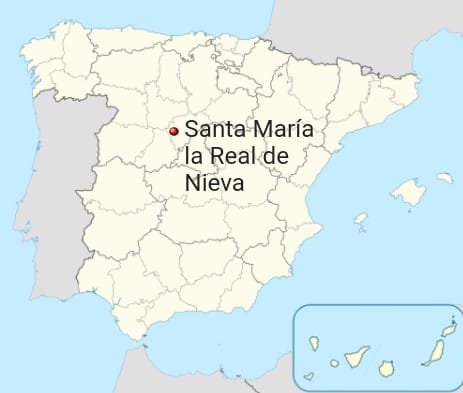Santa María la Real de Nieva is a municipality in the province of Segovia, Castile and León, Spain, located about 30 km northwest of the city of Segovia. According to the 2010 census, the municipality had a population of 1,193. All the villages, with the exception of the village of Santa María la Real de Nieva, were repopulated in the 11th century after the Reconquista of the region, during the reign of Alfonso VI of León and Castile. The village of Santa María la Real de Nieva was founded in 1395 by King Henry III, through the mediation of his wife Catherine of Lancaster. The foundation of the town was due to the discovery of a buried wooden image of Mary three years earlier, probably hidden since the Muslim invasion, in an open field where the village now lies. This fact was considered a miracle, and the queen ordered the construction of a sanctuary and a village around it, in honor of the image of this Virgin, called Soterraña, an old Spanish word meaning “underground.” The Crown proclaimed a series of privileges in 1395 and 1407 to promote settlement in the village, such as exemptions from taxes and military service.
















